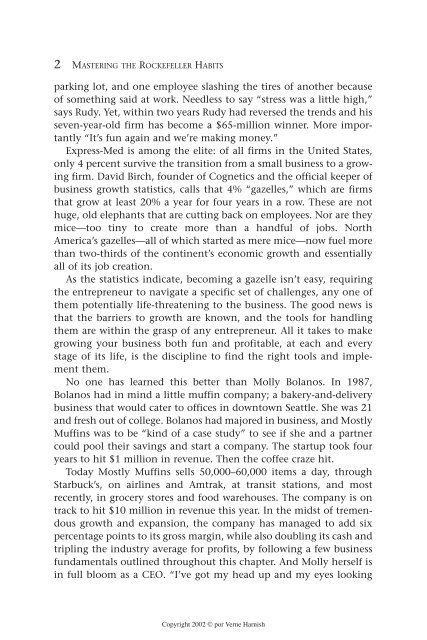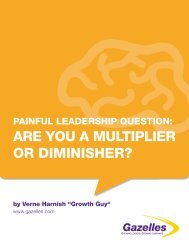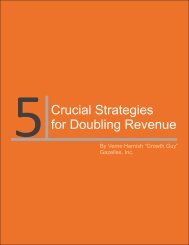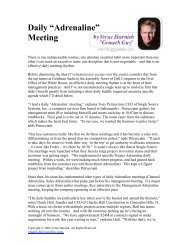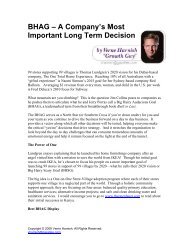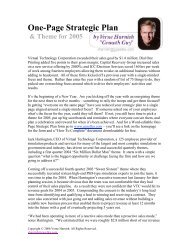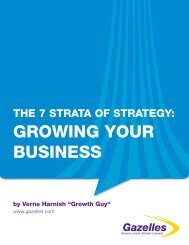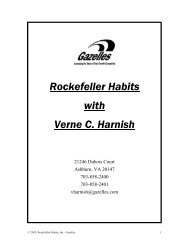english - Gazelles
english - Gazelles
english - Gazelles
You also want an ePaper? Increase the reach of your titles
YUMPU automatically turns print PDFs into web optimized ePapers that Google loves.
2 MASTERING THE ROCKEFELLER HABITSparking lot, and one employee slashing the tires of another becauseof something said at work. Needless to say “stress was a little high,”says Rudy. Yet, within two years Rudy had reversed the trends and hisseven-year-old firm has become a $65-million winner. More importantly“It’s fun again and we’re making money.”Express-Med is among the elite: of all firms in the United States,only 4 percent survive the transition from a small business to a growingfirm. David Birch, founder of Cognetics and the official keeper ofbusiness growth statistics, calls that 4% “gazelles,” which are firmsthat grow at least 20% a year for four years in a row. These are nothuge, old elephants that are cutting back on employees. Nor are theymice—too tiny to create more than a handful of jobs. NorthAmerica’s gazelles—all of which started as mere mice—now fuel morethan two-thirds of the continent’s economic growth and essentiallyall of its job creation.As the statistics indicate, becoming a gazelle isn’t easy, requiringthe entrepreneur to navigate a specific set of challenges, any one ofthem potentially life-threatening to the business. The good news isthat the barriers to growth are known, and the tools for handlingthem are within the grasp of any entrepreneur. All it takes to makegrowing your business both fun and profitable, at each and everystage of its life, is the discipline to find the right tools and implementthem.No one has learned this better than Molly Bolanos. In 1987,Bolanos had in mind a little muffin company; a bakery-and-deliverybusiness that would cater to offices in downtown Seattle. She was 21and fresh out of college. Bolanos had majored in business, and MostlyMuffins was to be “kind of a case study” to see if she and a partnercould pool their savings and start a company. The startup took fouryears to hit $1 million in revenue. Then the coffee craze hit.Today Mostly Muffins sells 50,000–60,000 items a day, throughStarbuck’s, on airlines and Amtrak, at transit stations, and mostrecently, in grocery stores and food warehouses. The company is ontrack to hit $10 million in revenue this year. In the midst of tremendousgrowth and expansion, the company has managed to add sixpercentage points to its gross margin, while also doubling its cash andtripling the industry average for profits, by following a few businessfundamentals outlined throughout this chapter. And Molly herself isin full bloom as a CEO. “I’ve got my head up and my eyes lookingCopyright 2002 © por Verne Harnish


